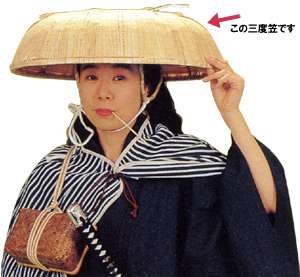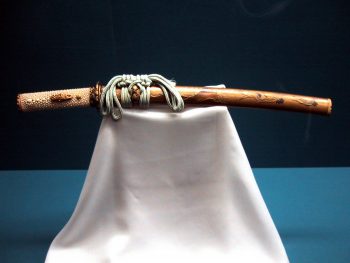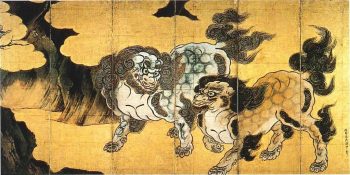Archive for July, 2010
To Become Posted by Ginny on Jul 29, 2010
なる can be used to show a change in state : 彼の娘はどうなりましたか = What has become of his daughter? (かれ/彼 = him. の = possessive particle. むすめ/娘 = daughter. は = particle. どう =how, in what way, about. なりました = became. か = question particle.) When using a noun to show a change in state…
Traditional Japanese Hats Posted by Ginny on Jul 26, 2010

The takuhatsugasa (托鉢笠) was a hat worn by travelers to avoid the glare of the sun or protect the face from rain. The hat was made of rice straw woven together. A good portion of the hat shields the face, and if you watch samurai movies, you’ll notice that the hat was used to shield…
Japanese Swords Posted by Ginny on Jul 23, 2010

The samurai class has long been disbanded and the use of swords in public places has been banned. However, the swords of the samurai are still of keen interest to collectors and sword aficionados. Just by looking at the sword, you can tell the period in which it came. If only swords could talk! Imagine…
Woodblock Prints Posted by Ginny on Jul 20, 2010

Moku Hanga (木版画) or woodblock printing is a unique art form of Japan. To make a woodblock print an image was painted on a thin piece of paper called washi (わし) and glued to a flat piece of wood. Then the artist would carve away an image on the wood. Lastly, the ink was added…
Sea Day Posted by Ginny on Jul 17, 2010
The third Monday of July is a holiday in Japan called うみのひ (海の日) or Marine Day (literally means “Sea Day”). It’s always held on a Monday so people can have a three day weekend. Marine Day is a day where people go to the beaches and appreciate the beauty of the sea. The holiday is…
Japanese Painters Posted by Ginny on Jul 14, 2010

I can’t list all the Japanese painters that ever lived because there is simply too many to count. What I can do is list some of the more famous ones. Hasegawa Tōhaku (長谷川 等伯) is known for his reserved style of painting. One of his famous paintings is called Shōrin zu byōbu (松林図 屏風), which…
Quote Marker と Posted by Ginny on Jul 11, 2010
Quote marker とcan be used to quote someone’s speech : 勅使河原さんは来週来ると言いました = Mr. Teshigawara said that he will come next week. (てしがわら/勅使河原 = Testhigawara. さん = Mr. は = particle. らいしゅう/来週= next week. くる/来る = to come. と = quote marker. いいました/言いました = said.) The sentence above is an example of an indirect quote. To…


